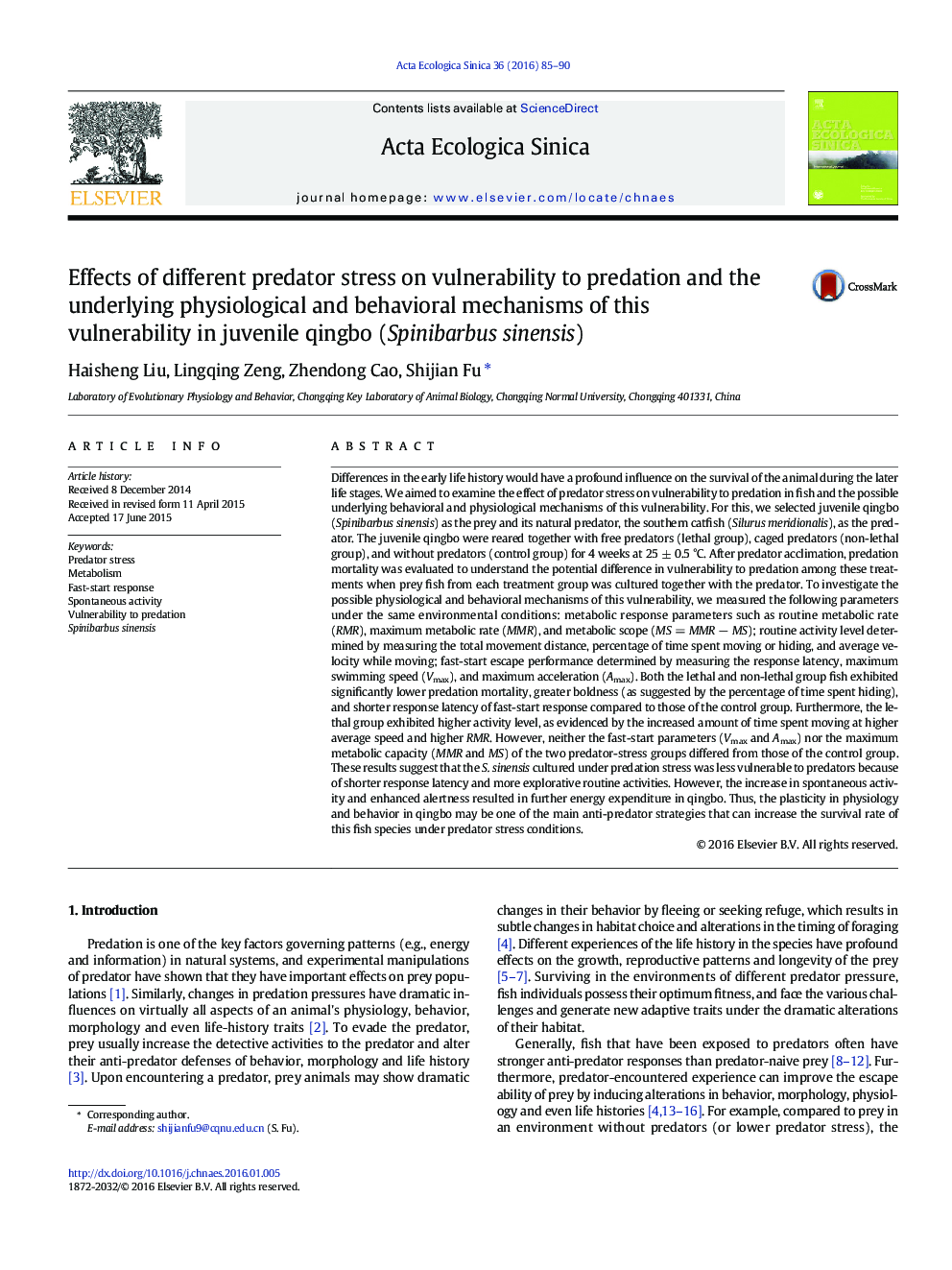| کد مقاله | کد نشریه | سال انتشار | مقاله انگلیسی | نسخه تمام متن |
|---|---|---|---|---|
| 4379750 | 1303934 | 2016 | 6 صفحه PDF | دانلود رایگان |
Differences in the early life history would have a profound influence on the survival of the animal during the later life stages. We aimed to examine the effect of predator stress on vulnerability to predation in fish and the possible underlying behavioral and physiological mechanisms of this vulnerability. For this, we selected juvenile qingbo (Spinibarbus sinensis) as the prey and its natural predator, the southern catfish (Silurus meridionalis), as the predator. The juvenile qingbo were reared together with free predators (lethal group), caged predators (non-lethal group), and without predators (control group) for 4 weeks at 25 ± 0.5 °C. After predator acclimation, predation mortality was evaluated to understand the potential difference in vulnerability to predation among these treatments when prey fish from each treatment group was cultured together with the predator. To investigate the possible physiological and behavioral mechanisms of this vulnerability, we measured the following parameters under the same environmental conditions: metabolic response parameters such as routine metabolic rate (RMR), maximum metabolic rate (MMR), and metabolic scope (MS = MMR − MS); routine activity level determined by measuring the total movement distance, percentage of time spent moving or hiding, and average velocity while moving; fast-start escape performance determined by measuring the response latency, maximum swimming speed (Vmax), and maximum acceleration (Amax). Both the lethal and non-lethal group fish exhibited significantly lower predation mortality, greater boldness (as suggested by the percentage of time spent hiding), and shorter response latency of fast-start response compared to those of the control group. Furthermore, the lethal group exhibited higher activity level, as evidenced by the increased amount of time spent moving at higher average speed and higher RMR. However, neither the fast-start parameters (Vmax and Amax) nor the maximum metabolic capacity (MMR and MS) of the two predator-stress groups differed from those of the control group. These results suggest that the S. sinensis cultured under predation stress was less vulnerable to predators because of shorter response latency and more explorative routine activities. However, the increase in spontaneous activity and enhanced alertness resulted in further energy expenditure in qingbo. Thus, the plasticity in physiology and behavior in qingbo may be one of the main anti-predator strategies that can increase the survival rate of this fish species under predator stress conditions.
Journal: Acta Ecologica Sinica - Volume 36, Issue 2, April 2016, Pages 85–90
